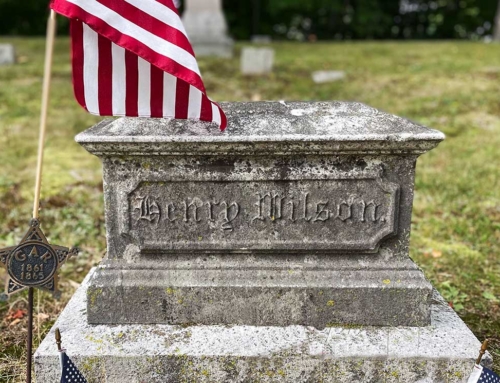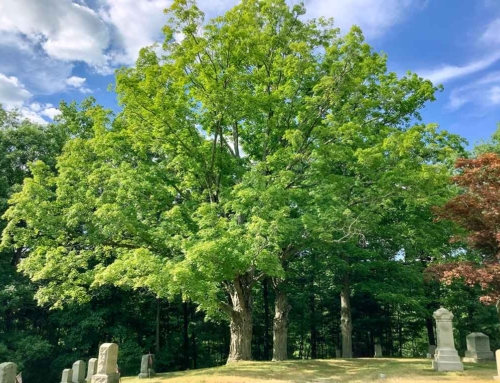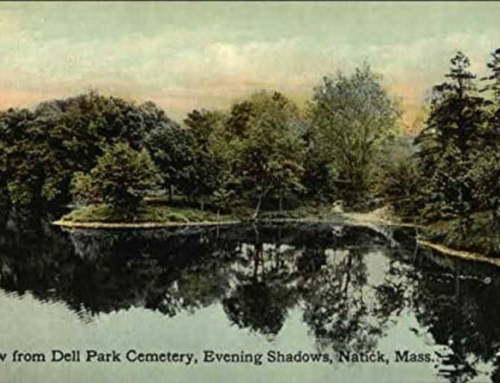Dell Park was originally founded as the town burying grounds in 1849. Today it is the oldest cemetery still operating in Natick. Older historic burial grounds including the Boden Lane Cemetery in West Natick, the North Natick Cemetery, the Indian Burial Ground, the Old Burial Ground, and the Glenwood Cemetery, in South Natick, can still be visited.


South Natick (shown left)
As it appeared in 1874, showing the location of the Old Burial Ground (marked Old Cem.), located behind the church now known as the Eliot Church. The small green triangle marks the location of the Bacon Library and site of the Indian Burial Ground.

Glenwood Cemetery (shown right)
Shows the location of the Glenwood Cemetery, (marked as Greenwood on the map) also in South Natick, opened in 1905.
(These illustrations are excerpts from the Map of the Town of Natick Middlesex Co. Mass, from actual Surveys by F. C. Tucker,C. E. Published by J. B. Beers, & Co. 36 Vesey Street, New York, 1874. Norman B. Leventhal Map Center Collection, Boston Public Library)
In his History of Natick from its First Settlement in 1651, (Boston, 1856) Oliver N. Bacon writes:
“By a vote passed at the April meeting of 1849, twelve acres of land were purchased of Edward Walcott, Esq., to be used as a town burying ground, and having been laid out by a committee of the town on the 8th day of July, 1849, the citizens of the place assembled to consecrate it and set it apart as a cemetery. The procession, consisting of the clergymen of the place, Sons of Temperance, Odd Fellows, Firemen, children of the public schools, ladies and citizens, marched under the direction of Hon. Henry Wilson to the cemetery grounds.” p. 111.
“Tis well in these secluded shades / This pleasant spot to consecrate”
-From a hymn written for the occasion by Miss Eunice Morse
Following an invocation by Rev. Alfred Greenwood, the Rev. Samuel Hunt of the First Church delivered an address in which he called attention to the changing tastes which led to the creation of “extensive tracts of land, picturesque in scenery and presenting an agreeable diversity of prospect, to be fitted up as ornamental burying grounds…as cemeteries, or…places of rest for all coming time.” In this regard, Dell Park was following the example of the Mount Auburn Cemetery in Cambridge (est. 1831), which was the first of the pastoral cemeteries, modeled on utopian ideals, as well as the Green-wood Cemetery in Brooklyn, and Laurel Hill in Philadelphia.
Oliver Bacon continues his account of the dedication ceremony:
“Convenient of access to the village and the town, presenting, for the choice of different tastes, the broad and smooth plain or the undulating forest, lying on the border of yon beautiful and peaceful lake, and, although within hearing of the rushing world as it hurries past on its pathway of iron, yet so retired that mourners in the privacy of their grief may visit, without fear of intrusion, the graves and monuments sacred to the memories of their much loved but departed friends.” (Bacon, p. 113)
Bacon, Oliver N. A History of Natick from. the First Settlement in 1651 to the Present Time…Boston, 1856. The full text is available from the Internet Archive
Opening of additional space
In 1890 the Dell Park Cemetery Association was incorporated. At that time the grounds of an adjacent property, known as the Lakeside Cemetery, was acquired and became known as New Dell Park. Its layout is a blend of the picturesque landscape of Old Dell Park and the landscaped lawn design which became prevalent by the end of the nineteenth century.





